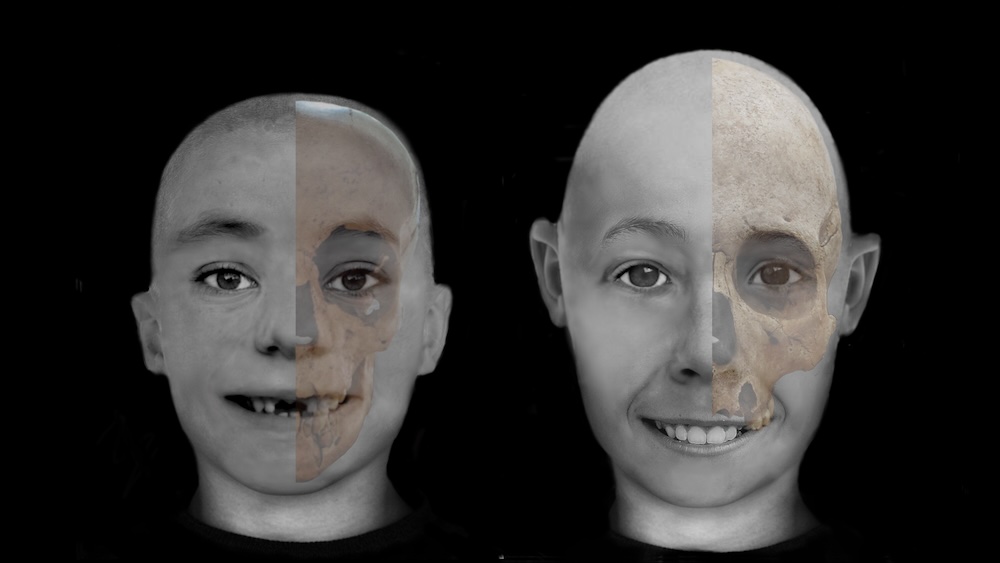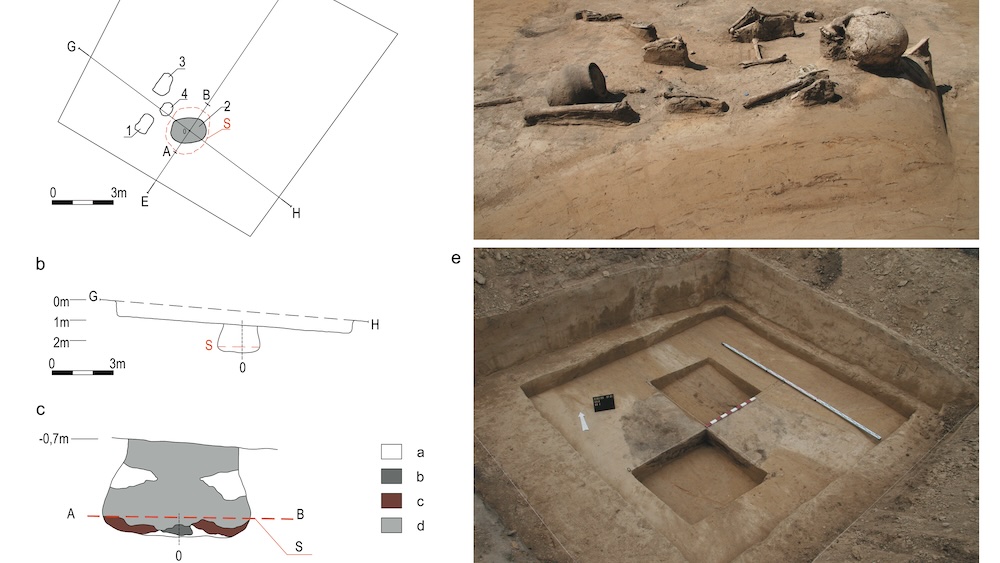
A 1,600-year-old double burial discovered by archaeologists in Poland is some of the earliest evidence of Huns in Europe and the oldest Hunnic burial in Poland, a new study finds.
The Huns were fearsome, horse-riding nomadic warriors from Central Asia who pillaged across Europe in the fourth and fifth centuries. Under their infamous leader, Attila the Hun — dubbed "the Scourge of God" by Christians — the Huns built an empire stretching from what's now Russia to France. Attila's army was so powerful that both the Eastern (Byzantine) and Western Roman empires paid him protection money.
In 2018, study lead author Jakub Niebylski, an archaeologist at the Polish Academy of Sciences, excavated the grave in Czulice, a village near Krakow. The site contained the remains of two children, one of whom was laden with gold and silver trinkets and had an artificially deformed skull — a practice common among Hunnic elites. The grave also yielded an iron knife; a clay pot; and the remains of a dog, cat and crows.
Niebylski and his team examined the human bones via computerized tomography (CT) scans and X-rays, and performed isotope and ancient DNA analysis of the samples. They found that the child without grave goods was a boy between 7 and 9 years old with ancestry from Central and Eastern Europe. His exceptionally smooth bones indicated that his "body was cooked before burial," according to a study published in the June issue of the Journal of Archaeological Science: Reports.
The second child was also a boy between 8 and 9 years old whose ancestry was closest to that of nomads from Kazakhstan and Kyrgyzstan, the analysis revealed. The back of his skull had been manipulated since his infancy to make it protrude in an egg-like shape. The boys were buried sometime between A.D. 395 and 418.
Related: 'Princely' tomb of Hun warrior unearthed in Romania
"We have two boys of different genetic origin, Asian and European, who were put in the same grave in different funeral rites," co-author Anita Szczepanek, an archaeologist and anthropologist at the Polish Academy of Sciences, told Live Science. "The European boy was buried on his belly with his head opposite the head of the Hunnic boy. But sometime later, [the European boy's skull] was moved to his legs."

The Hunnic boy with the deformed skull had lesions in his eye sockets and likely had anemia or another chronic disease that may have contributed to his early death. The researchers discovered that he was a local, whereas the European boy was born elsewhere, most likely in Northern or Central Europe, and later migrated to the region.
Both boys had similar diets rich in protein, according to the isotopic analysis. The European boy's lack of grave goods suggests that he had lower social status and may have served the Hunnic boy as a servant or companion.
"It's also possible that they didn't know each other," Szczepanek said. "We don't know what connected them or why they were put in the same grave." The lack of written sources makes it difficult for archaeologists to know the exact funerary practices of the Huns, she added.
"This is probably the first significant work on the Hunnic presence in Poland," Hyun Jin Kim, a professor of Classics at the University of Melbourne in Australia who was not involved in the study, told Live Science. "Cranial deformation basically marks you out as someone who is either a Hun or trying to look like a Hun. The fact that people practicing this were found in Southern Poland is a strong indicator of Hunnic presence there, which we didn't have earlier."
Cranial deformation is a practice the Huns adopted from people they encountered in Central Asia — particularly the Alans, an ancient Iranian nomadic pastoral tribe — and was likely practiced by the aristocracy and the elite, Kim added.







